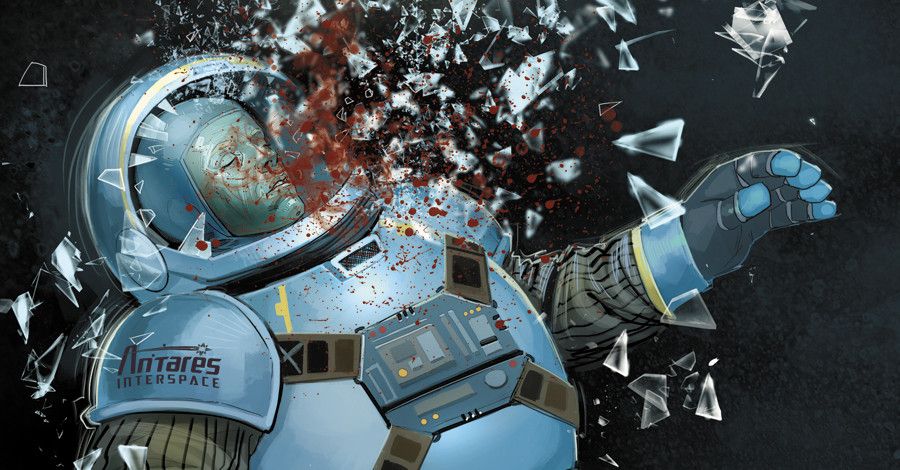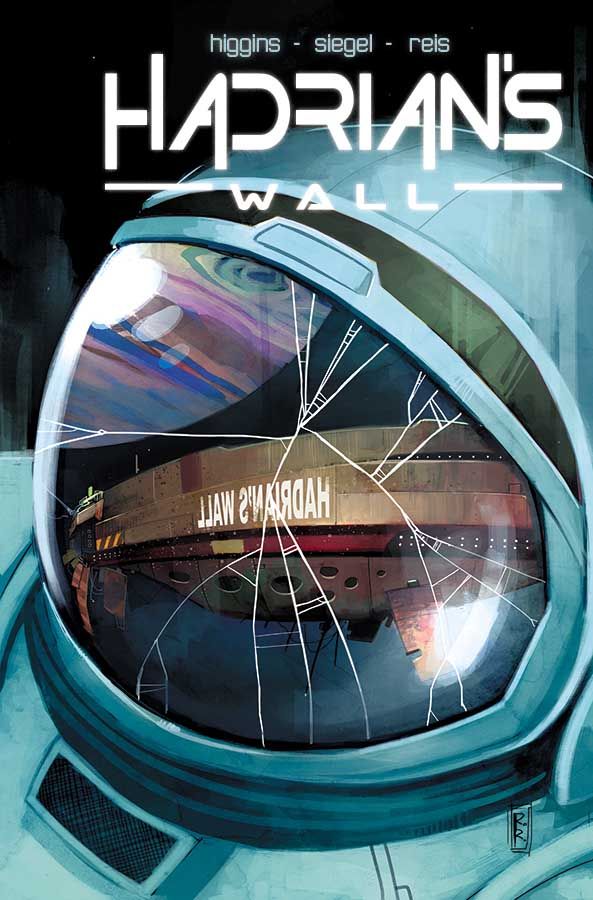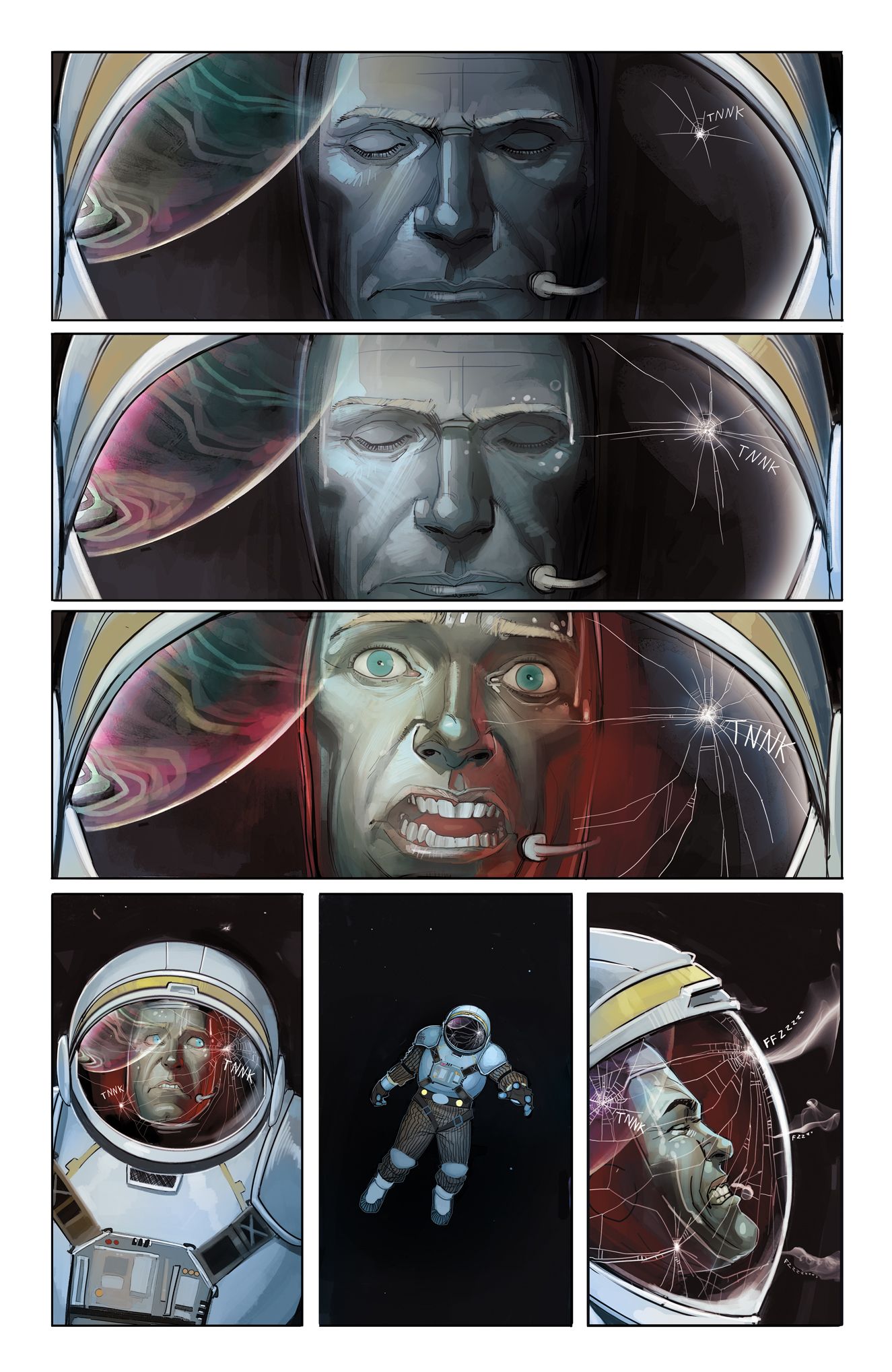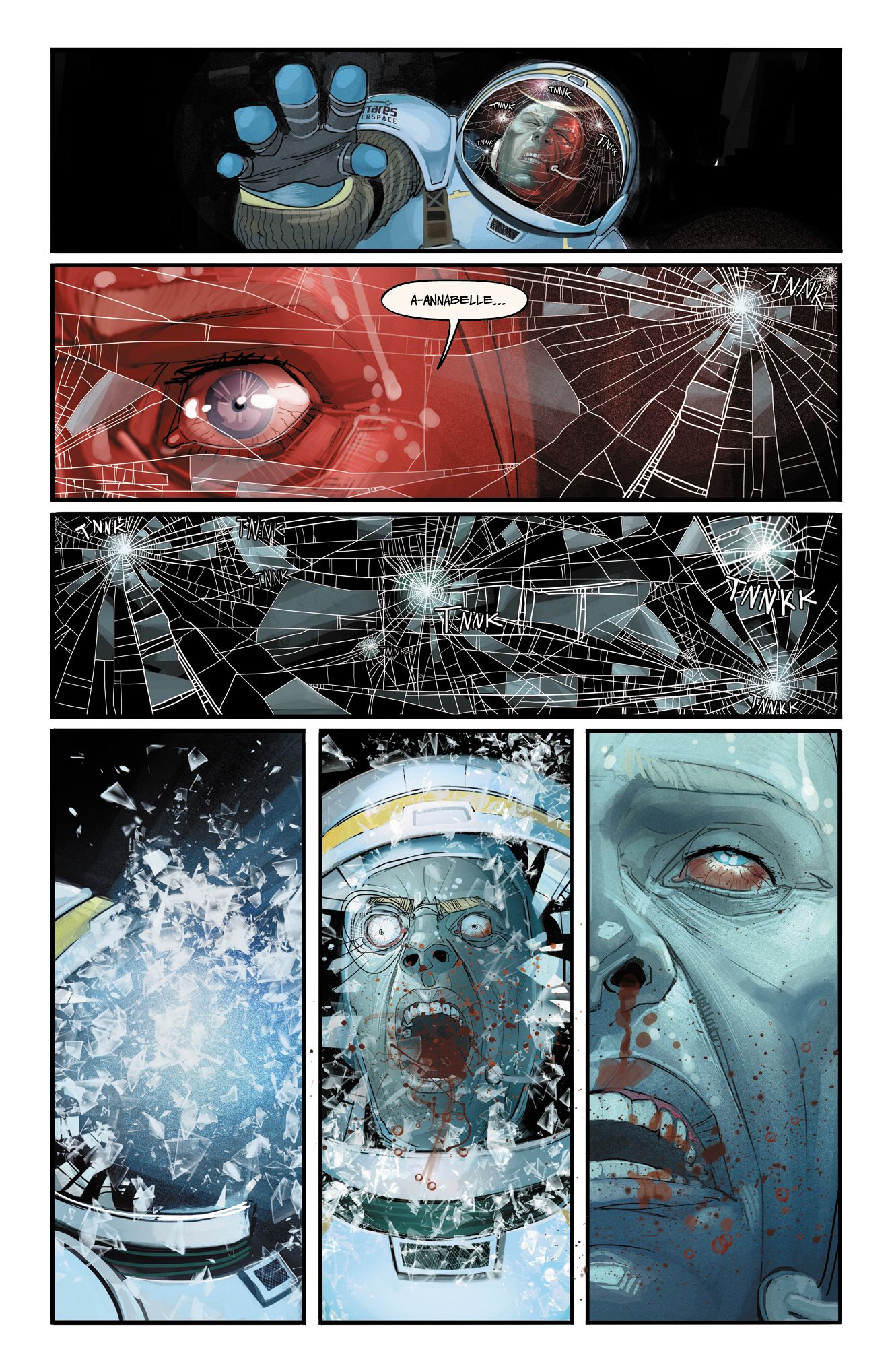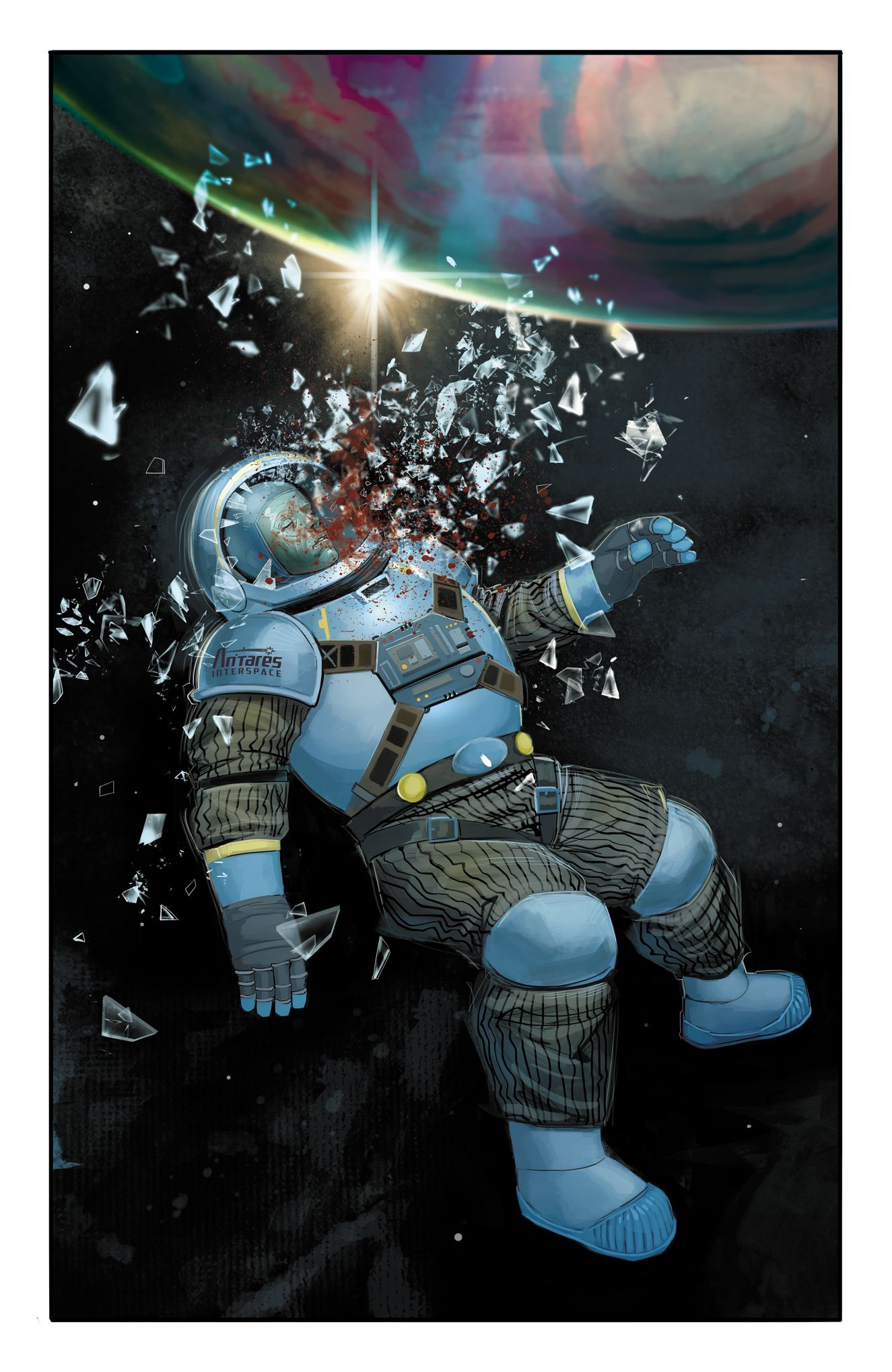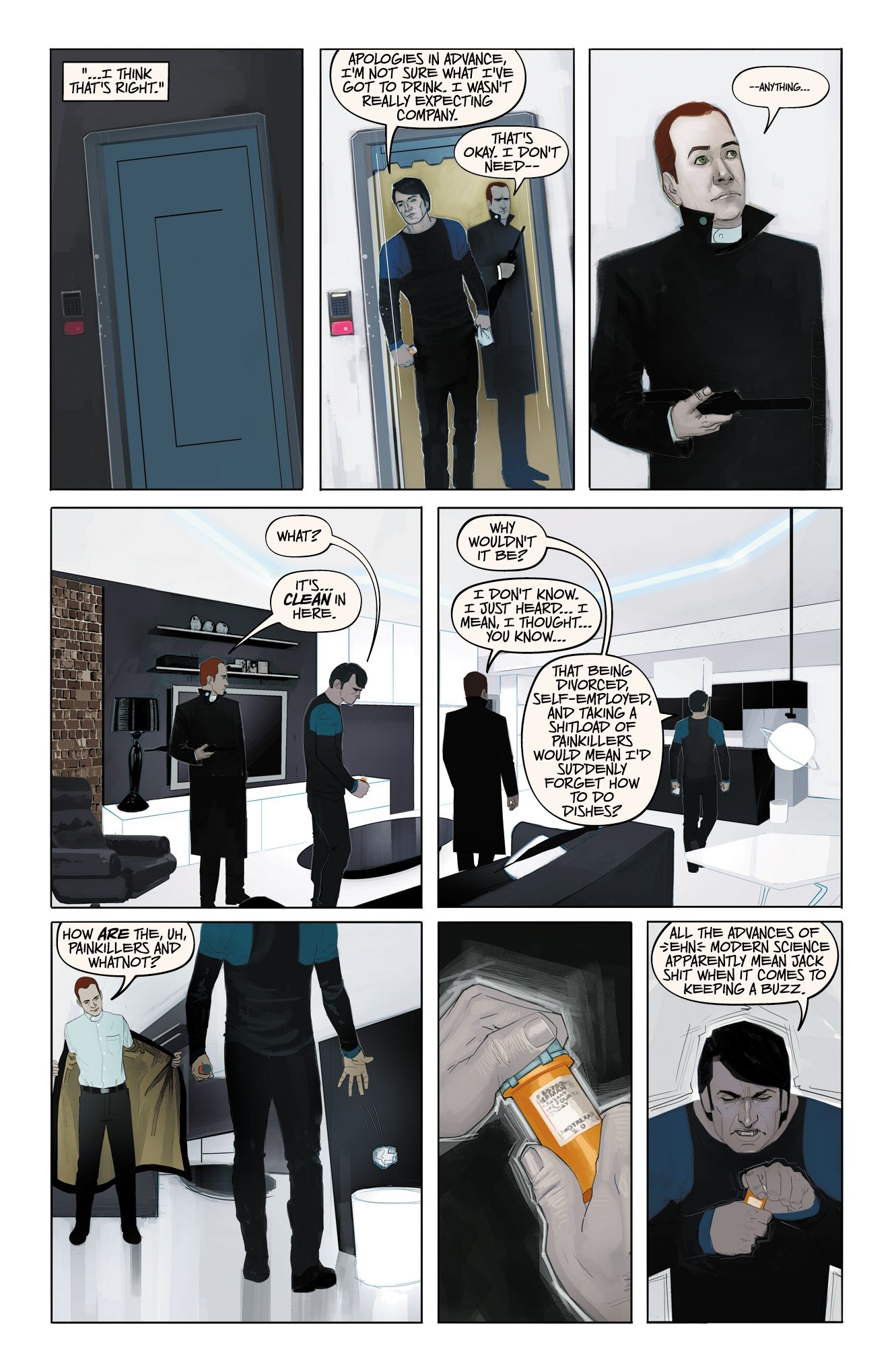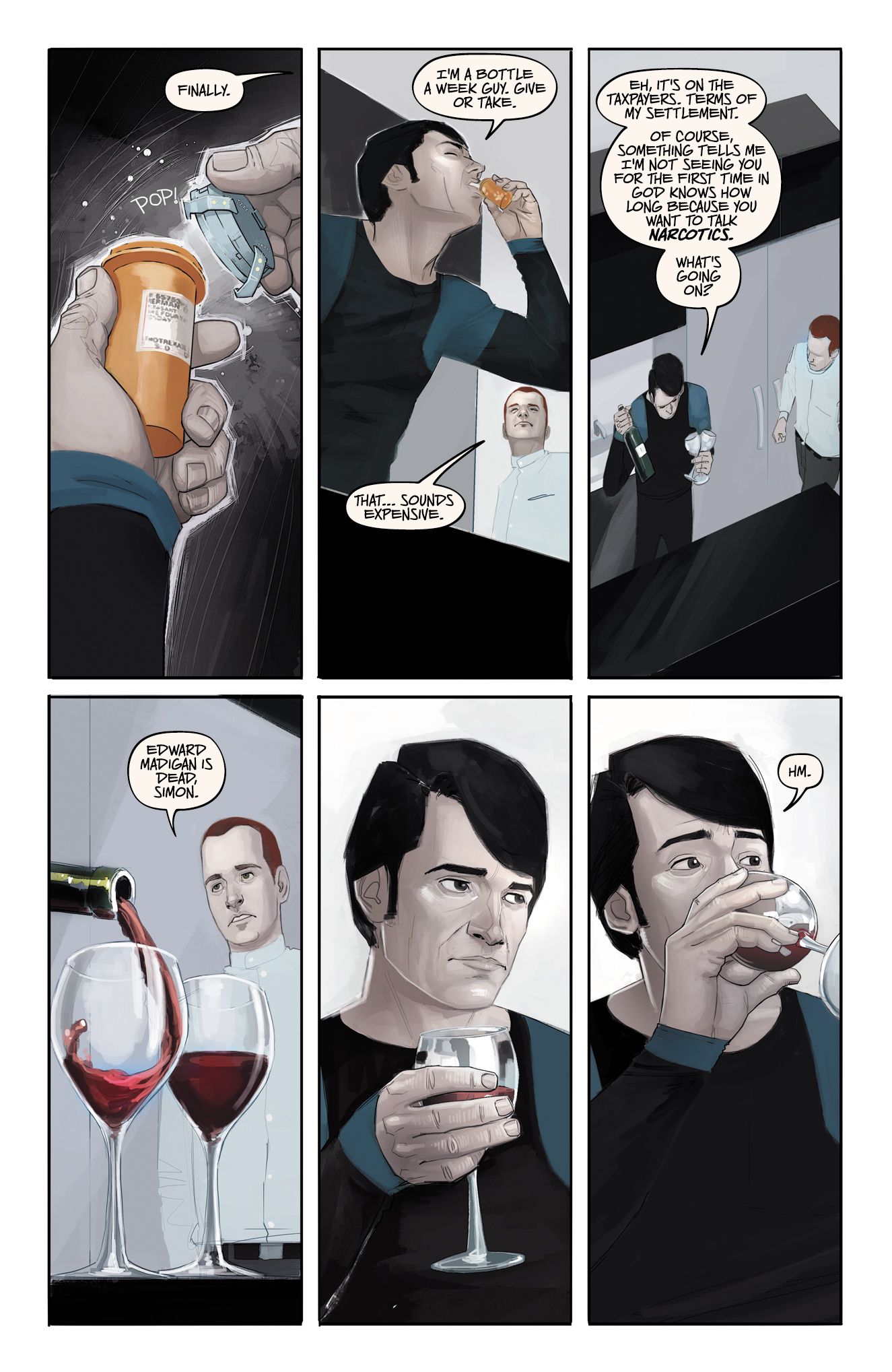The hypnotic industrial design of creepy deep-space starships made for some of the weirdest horror films of the 1980s, and this September that aesthetic returns in Image Comics and OSSM Comics' "Hadrian's Wall."
Created by current "Mighty Morphin Power Rangers" writer Kyle Higgins and his collaborators from their previous "C.O.W.L." series - co-writer Alec Siegel and artist Rod Reis -the eight-issue series takes its visual, world-building and storytelling cues from Cold War sci-fi epics like "Aliens." But the creators are working to make "Hadrian's Wall" more than pastiche, with an original concept that sees outer space in 2085 embroiled in a new Cold War between Earth and it's biggest off-planet colony, Theta. When an astronaut is mysteriously killed aboard the titular space station, the investigation into his murder reveals levels of pain and paranoia.
RELATED: IMAGE EXPO: O'Malley, Seagle, Higgins And More Look To The Future
Higgins spoke with CBR about the origins of the project, creating an '80s-indebted epic in the age of "Stranger Things," his team upping their creative game for the new book and why "Hadrian's Wall" is only the latest step in their collaboration.
CBR News: Kyle, "Hadrian's Wall" reunites you with your "C.O.W.L." co-creators Alec Siegel and Rod Reis, but you're mining very different territory from that of a superhero trade union. What was the initial spark for the new story of a future Cold War/murder mystery in space?
Kyle Higgins: Well, we wanted to do something different from "C.O.W.L." We wanted something that was kind of in the same ballpark aesthetically and tonally, but we wanted to play in a different genre and time period. I'd had this idea for a long time about a locked room mystery on a space ship, but I didn't have much more than that. As we were wrapping up "C.O.W.L." and looking for the next thing, the idea of that environment being created visually by Rod and being created through the prism of a 1980s sci-fi film was super exciting to me. And it got me to dive in and figure out what kind of story I could build in that environment that could say something interesting about people and about relationships.
In the '80s, obviously there was a big Cold War element to a lot of media, and the U.S./Soviet dynamic was something that I'm very interested in. So projecting that 100 years into the future where Earth and their biggest colony on Theta are in the midst of a new Cold War was really the spark for the emotional story we wanted to tell. The way we pared that down to our main characters is that Simon Moore - the investigator who heads out to the space station Hadrian's Wall to look into presumed accidental death of one of its astronauts - has a relationship with one of the crew members on the ship. And when I say "relationship," I mean they used to be married. So now as Simon is looking into the death of this astronaut and everyone on the ship starts to become a suspect, he has to navigate his own icy dynamic with his ex-wife as tensions start to boil over between Earth and the biggest colony on Theta.
At its core, this is a story about relationships and what tears people apart and how resentments build up over time.
It's interesting because you're tipping your hat to classic sci-fi like "Aliens" and other '80s deep space epics, everyone has an idea of what that style is. And this story comes at a cultural moment where the similarly inspired "Stranger Things" series from Netflix has kind of taken over the internet.
Well, I'll do one better for you. ["Stranger Things" creators] the Duffer Brothers are friends of mine. We went to the same college, and we made our thesis films one year apart at Chapman University. They had a film called "Eater" that is incredible. It was the big film at Chapman that year, and then the next year I made "The League" [which served as the basis for "C.O.W.L."]. After that, we fell out of touch, but then last year as they were putting that show together, and I was putting this book together, we found we were on parallel paths. And "Stranger Things" is great. It's absolutely incredible. And it makes me smile to think we both came at this same era at the same time but in a different way. There must be something in the water.
It's somewhat like TV sci-fi from the '50s like "Captain Video" came back around in the '80s with a bunch of spoof homages, except it seems that a project like "Hadrian's Wall" is a more sincere take on a past style. Do you feel that the style of story you're telling is somewhat eternal despite its period origins?
We're wearing our influences on our sleeves here. The aesthetics of those films were incredibly influential to me as a storyteller, a writer and a director. So to play something like "Hadrian's Wall" in that era was something we thought would be fun. It's a retro-future kind of world. It's 2085 as envisioned by 1985. That's how we approached the design of the book.
And the other aspect to talk about here is that it's a crowded marketplace right now -especially for sci-fi books. And so we wanted to find an interesting angle on our world building. And that era and that aesthetic wasn't something we'd seen recently, and we felt it would be a lot of fun.
One other element from those '80s movies that seem to be of some importance here is that when you're talking about a Cold War-style space thriller, paranoia is everywhere. Characters not only don't know who to trust but they could also be thrown out an airlock at any moment. As you worked with Rod to design the book, how did you want to get that feeling across both in the story and in the visuals?
That's a huge element of the story and a big part of our approach. A spaceship is kind of like the ultimate locked room, and we had a lot of conversations about how to build the series around that. We talked a lot about that in the design process. There's also a dynamic with Simon's painkiller addiction that I don't want to spoil, but it's a huge part of the story. His descent into madness progresses over the run, and that's our attempt to ratchet the tension and paranoia up in a visual way. He pops pills like they're tick tacks, but when you take those away, what does withdrawal look like in outer space? And what does that do to you when you're trying to suss out who a killer is and you don't know who you can trust? An investigator who can't fully trust himself is an interesting dynamic, and I think Rod captures that paranoia in a really incredible way.
The most exciting thing about this series for me is that people can see what Rod can really do when he cuts loose. In a way, "C.O.W.L." was just a warm-up act for "Hadrian's Wall." I think when people see Rod's work on this book, he's going to become a much bigger household name.
"C.O.W.L." is a book that ran for a few arcs and is on semi-hiatus now with you guys having the option to return to those characters whenever you want, but this mystery is much more finite. Was the concept just the kind of story that necessitated a single story?
Yeah, it's an eight-issue story, and that was by design. We wanted to try and do something contained - basically a limited series that was a different model of storytelling than what we'd done. And mysteries by their very nature are finite. So we went into this with the approach of "Let's put a cap on this and break the best eight-issue story we can break, and then we'll all move on to another project together."
"Hadrian's Wall" #1 arrives on Sept. 14 from Image Comics.

